Dogs of Chernobyl: First-ever deep dive into their genetics, behaviors

Genetics, behavior of Chernobyl dogs observed in first-ever study
The dogs of Chernobyl have been living in and around the power plant for decades and researchers are now getting a first-ever close look in their behaviors and genetics to explain how they continue to live in such a hostile environment.
There are actually packs of dog families living in and around the Chernobyl nuclear power plant site and their lineage is believed to be generational, according to researchers.
A recent study published in the journal ScienceAdvances took a deep look into the behavior and the preliminary genetic makeup of dogs living in Chernobyl – a scientific first, according to the study's authors.
Researchers began looking into the genetic structure of 302 dogs that are free-roaming within the power plant in Chernobyl since 2017.

One of hundreds of dogs living in Chernobyl. (Clean Futures Fund)
"The dogs have continued to live and propagate in some well-defined regions, like the nuclear power plant area, Chernobyl City, which is where workers live some 15 kilometers or so away. It was a terrific opportunity to study the DNA of dogs living in this hostile environment and see what, if any, changes had occurred in what, if any, genes that have allowed them to survive and propagate and do relatively well in this environment," Elaine Ostrander, chief of the cancer genetics and comparative genomics branches at the National Human Genome Research Institute, told FOX TV Stations.
"We've never had another opportunity to gather this kind of information about any large mammal. This really represented the first time. So we were anxious to do so," Ostrander added.
Why dogs?
Researchers said a dog’s health and habits are very similar to that of a human. What may work medically for a dog could be easily translated to a person.
Additionally, previous studies on smaller mammals such as rodents, which typically live among humans, cannot truly give insight into the dynamic of animals living alongside humans; that’s where the dogs come in.
"Dogs are large mammals, and they very much reflect many of the things about us, you know, the food we eat, our exercise habits, our sleep habits, many, many of the things which go into our own health status," said Ostrander.
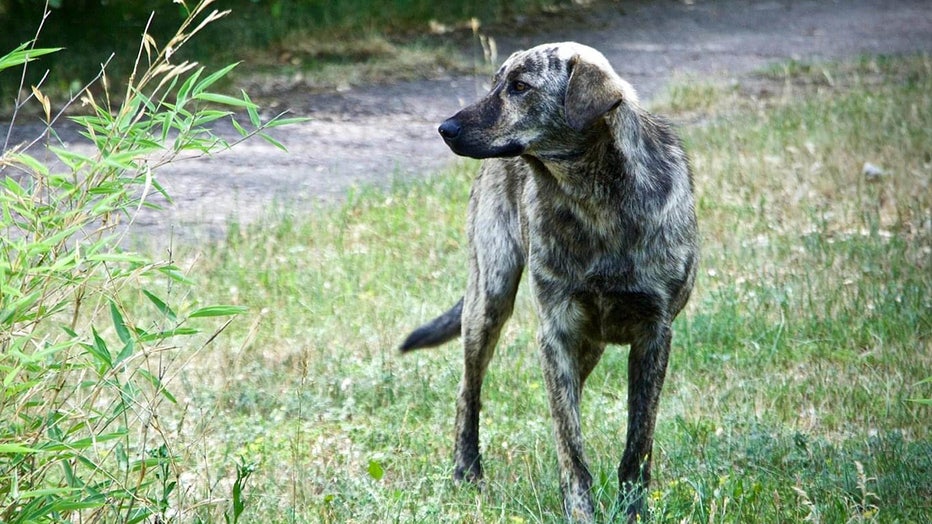
One of the many dogs of Chernobyl captured living near the power plant. (Jordan Lapier/Clean Futures Fund)
"It's one thing to study rodents or voles or mice or things like that. It's a completely different thing to study large animals that are living with us. These dogs do interact with the power plant workers. They are fed by the workers. They live in this, not like our pets here at home, but nevertheless, they do live in this interactive way. So it was really a very, very unique opportunity to explore not just the medical consequences, but to look at something that reflected our situation as well," she added.
Timothy Mousseau, professor of biological sciences at the University of South Carolina, said that in addition to being able to apply their findings of the health of the Chernobyl dogs to human health in the event of a nuclear reactor disaster, there are hundreds of dogs living in this somewhat hostile environment. So, convenience is also key.
Not only was convenience a factor, but programs involved with International Society for Prevention of Cruelty to Animals and Clean Futures Fund had been collecting blood samples from the Chernobyl dogs for years, which made analyzing years of data not only easily accessible but made this first-of-its-kind study possible.
Are Chernobyl dogs evolving faster?
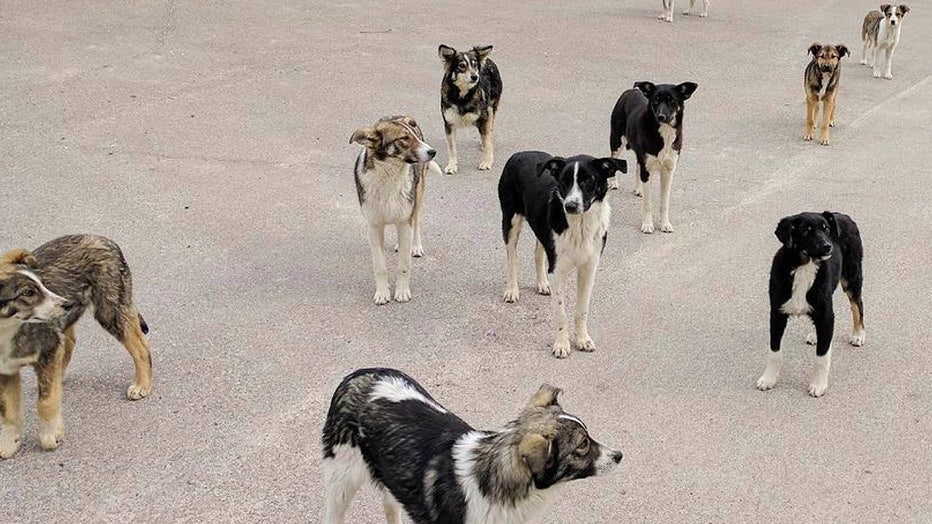
A group of dogs living in Chernobyl. (Timothy Mousseau / Clean Futures Fund)
The answer, which is similar to many questions related to novel studies, is – yes and no.
But, according to Mousseau, the confusion surrounding some other headlines about this study may be because people have a finite definition of the word "evolution."
"Evolution simply means change. It just means change through time. There's a big difference between evolution per se and adaptation in the sense of Darwinian evolution," Mousseau explained.
He did, however, confirm the dogs of Chernobyl that were involved in this study did show some evidence of genetic changes over the past 37 years since the disaster.
"And that's a form of evolution. But at this point, we have no information concerning whether there's been any kind of Darwinian adaptations to this environment," he said.
Another thing to note is that the changes seen in these dogs have yet to be directly linked to radiation caused by the 1986 disaster.
Those results won’t come until after the current study both Mousseau and Ostrander and their team are working on has been completed.
"We can now look for those changes that are likely related to this environment that, in a way that just you couldn't do with, you know, any other kind of approach. Given that there's limited numbers of populations that one can study for questions of this sort, the ability to really dissect up the genetic basis for the variation is critical. And there’s just no other sort of studies that can approach it in this way. It’s the precision and depth that we can go to using this approach is, again, it's really novel and exciting," Mousseau said.
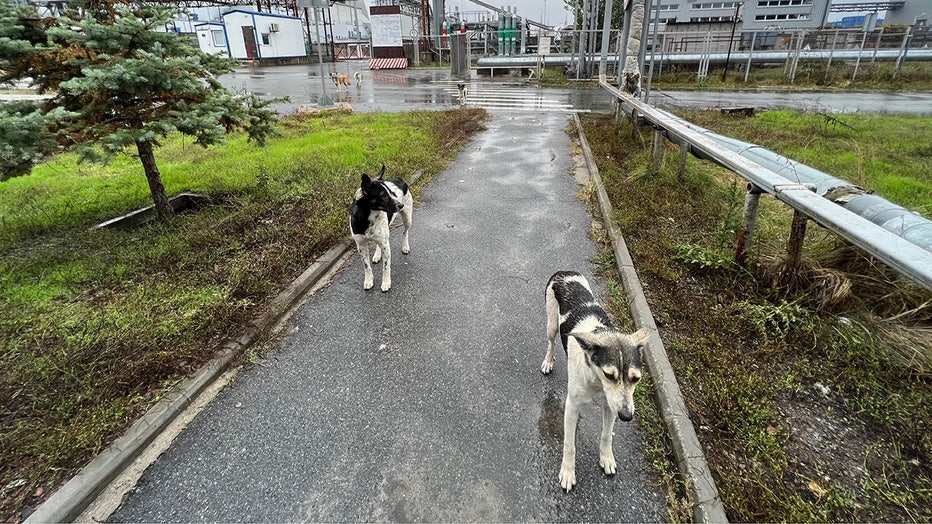
The dogs of Chernobyl. (Timothy Mousseau / Clean Futures Fund)
Chernobyl dogs and family dynamics
Eventually, both Ostrander and Mousseau and their team hope to take a closer look into the genetics of the dogs and break down what – if any – impacts the nuclear radiation had on the dogs’ genes and if those changes were passed down through generations.
But we’re getting ahead of ourselves.
The one exciting observation researchers were able to make were how these families of dogs interacted with each other.
A total of 15 families were identified since 2017 and what surprised researchers was that these families pretty much stayed in their chosen areas; there wasn’t much variation.
"The surprise was that while there certainly was some movement back and forth, there were a lot of families that basically stayed in the same place. The family of dogs living in the spent fuel rods, lives there. That's their spot," Ostrander explained.
"We could identify families of dogs, you know, parents and offspring and siblings of those offspring where they seemed to be geographically located, geographically constrained. I mean, why they choose not to move around as much as we might have thought, I don't know. And then in Chernobyl City, there was certainly more heterogeneity in the population. And so it seems as though the dogs living in Chernobyl City are, in general, more outbred because there's more breeds being brought in, more dogs being brought in by the workers who are then occasionally breeding with the dogs in Chernobyl City, that happens far less at the power plant," she continued.
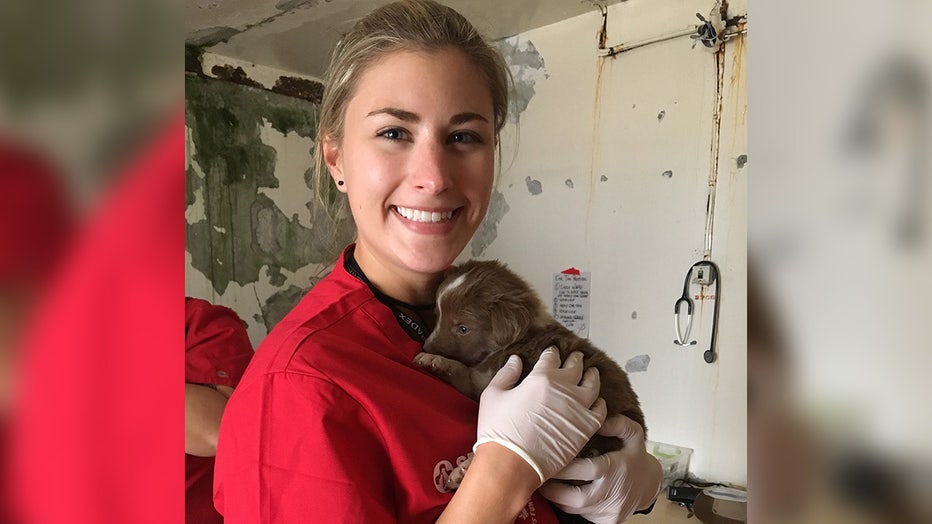
One of the many volunteers working to care for the dogs of Chernobyl. (Timothy Mousseau / Clean Futures Fund)
The 15 families pinpointed in this study were far more inbred which is critical to understanding what changes have occurred in the genome.
"This profoundly large database of genetic variation that Elaine and others have assembled, we now can recreate what the genomes of these dogs likely were 37 years ago at the time of the accident. And this is really what distinguishes this study from almost anything else where normally they would just take two populations and compare them and say, ‘Oh, they’re different. And so that must be because of the change in environment.’ But we can do so much better because we can recreate what the genotype likely looked like for all of these dogs and see how it's changed over the past 37 years and then start to explore what those changes might mean in terms of the dog's biology," Mousseau said.
The breed of dogs that were more prevalent in the population were ancestors of the German Shepherd, Alpine and related breeds such as Saint Bernards and even Rottweilers.
The most recent breed that was detected, however, was the Russian hound, Ostrander said.
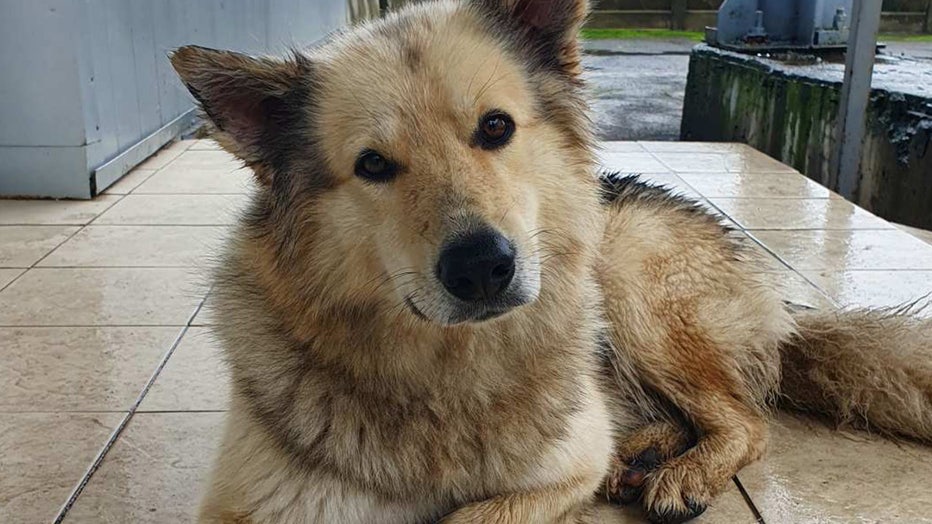
The dogs of Chernobyl. (Timothy Mousseau / Clean Futures Fund)
Quality of life
Many volunteers and residents near the Chernobyl power plant continue to feed and care for the dogs, and this includes health care and population control.
Sterilization methods have been implemented so the dogs don’t completely overrun the area but another thing to note is that these dogs that stay in this area don’t live particularly long lives.
The average lifespan of the dogs of the Chernobyl power plant site is anywhere between three and four years on average, and because of this, these dogs don’t live long enough to truly see the lasting impacts of possible radiation sickness or living in this type of environment for decades.
While many dogs who were analyzed did have doses of radiation, whether it was in their fur or somewhere more insidious such as being embedded in their teeth or bones, it is unclear if radiation is the cause of their short lives or just a culmination of factors.
"Usually it's predators coming in or they get hit by a car, you know, the usual dog mortality events. Freezing in the winter. Exposure to the elements is probably the main cause of mortality in this area, combined with the other stressors that they're facing, like starvation and radiation," Mousseau said.
Despite this, the dogs of Chernobyl have lived a fairly sustainable life and have clearly decided they aren’t going anywhere anytime soon.
Both Mousseau and Ostrander hope to continue looking at the dogs’ behaviors and complete their study on the long term impacts this type of hostile environment can have on their health and in turn, learn whether or not the results could reveal similar outcomes for humans.
"We will continue exploring it as each discovery raises new questions and new hypotheses. So Tim and I are very much in this for the long haul, for years and years and years," Ostrander said.
This story was reported from Los Angeles.

